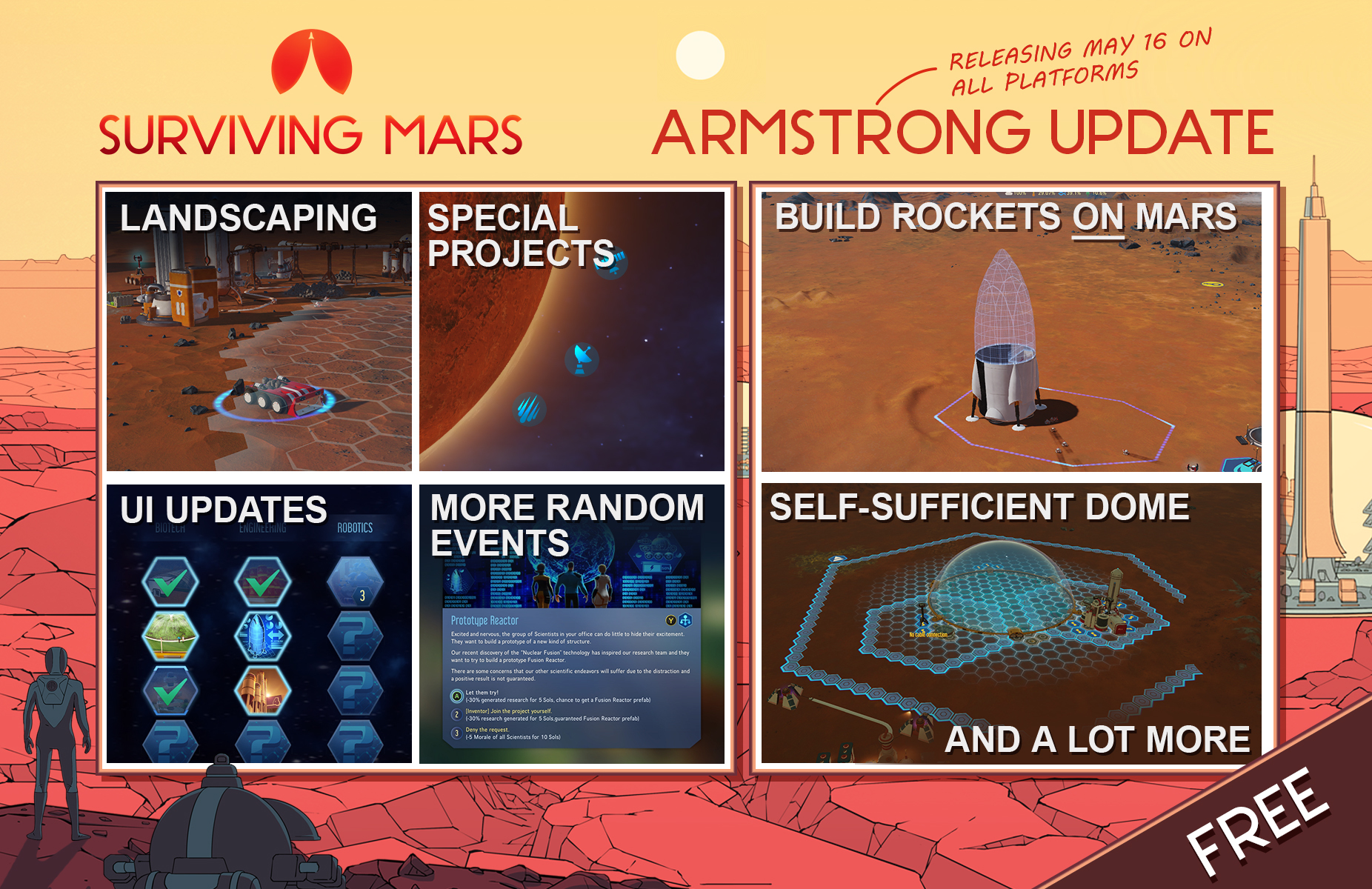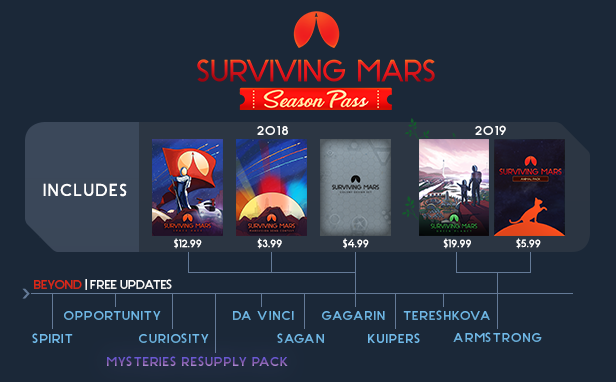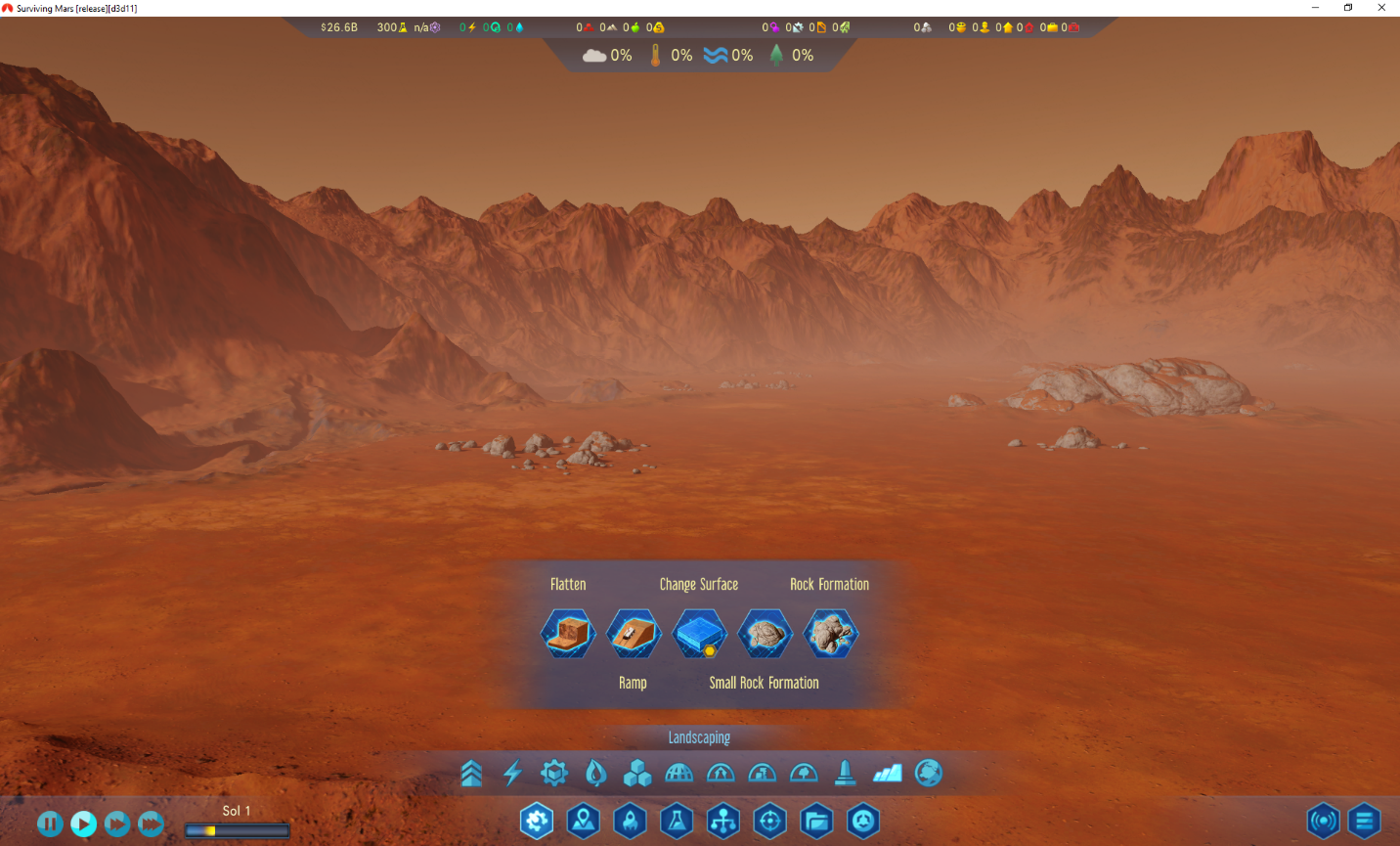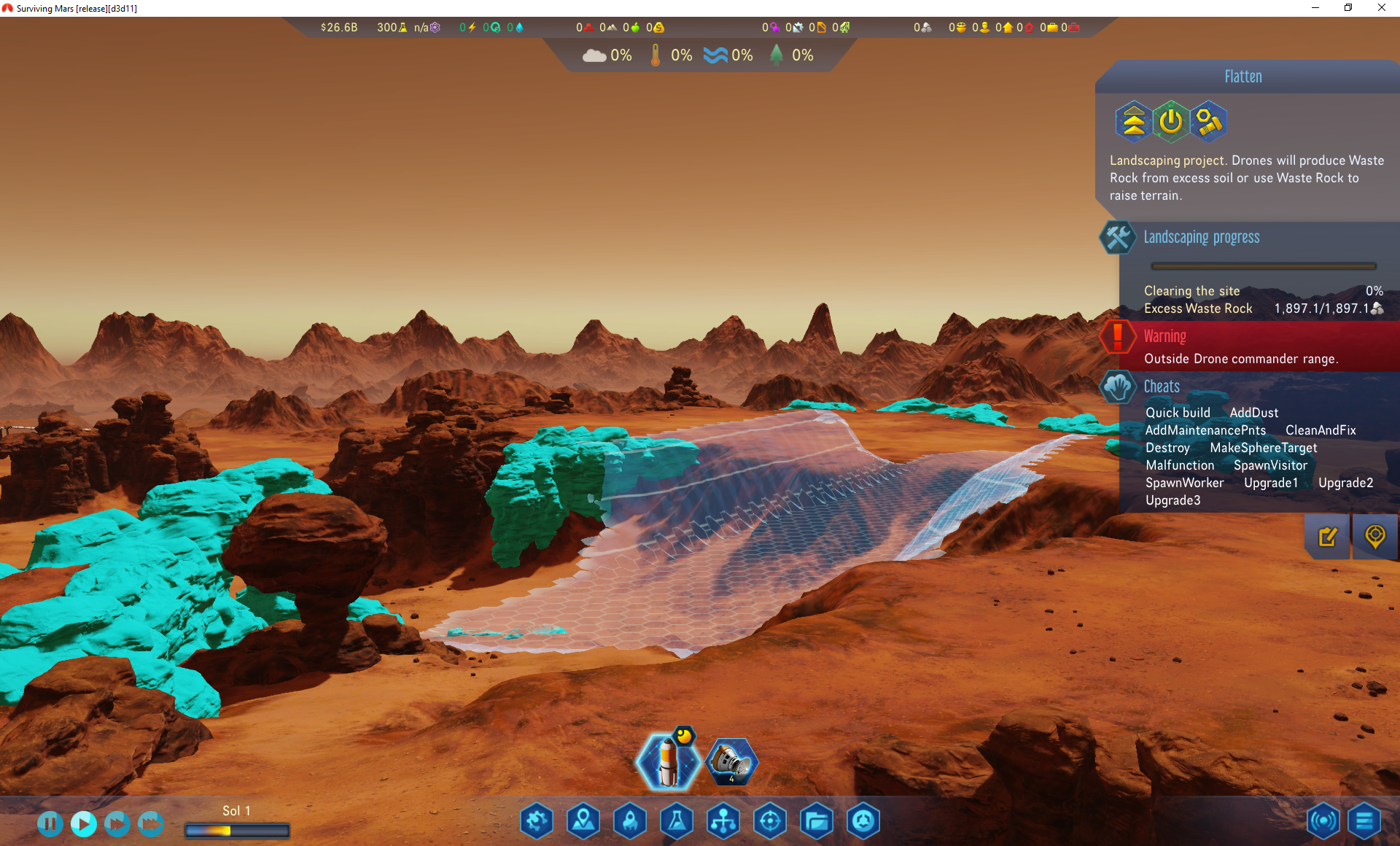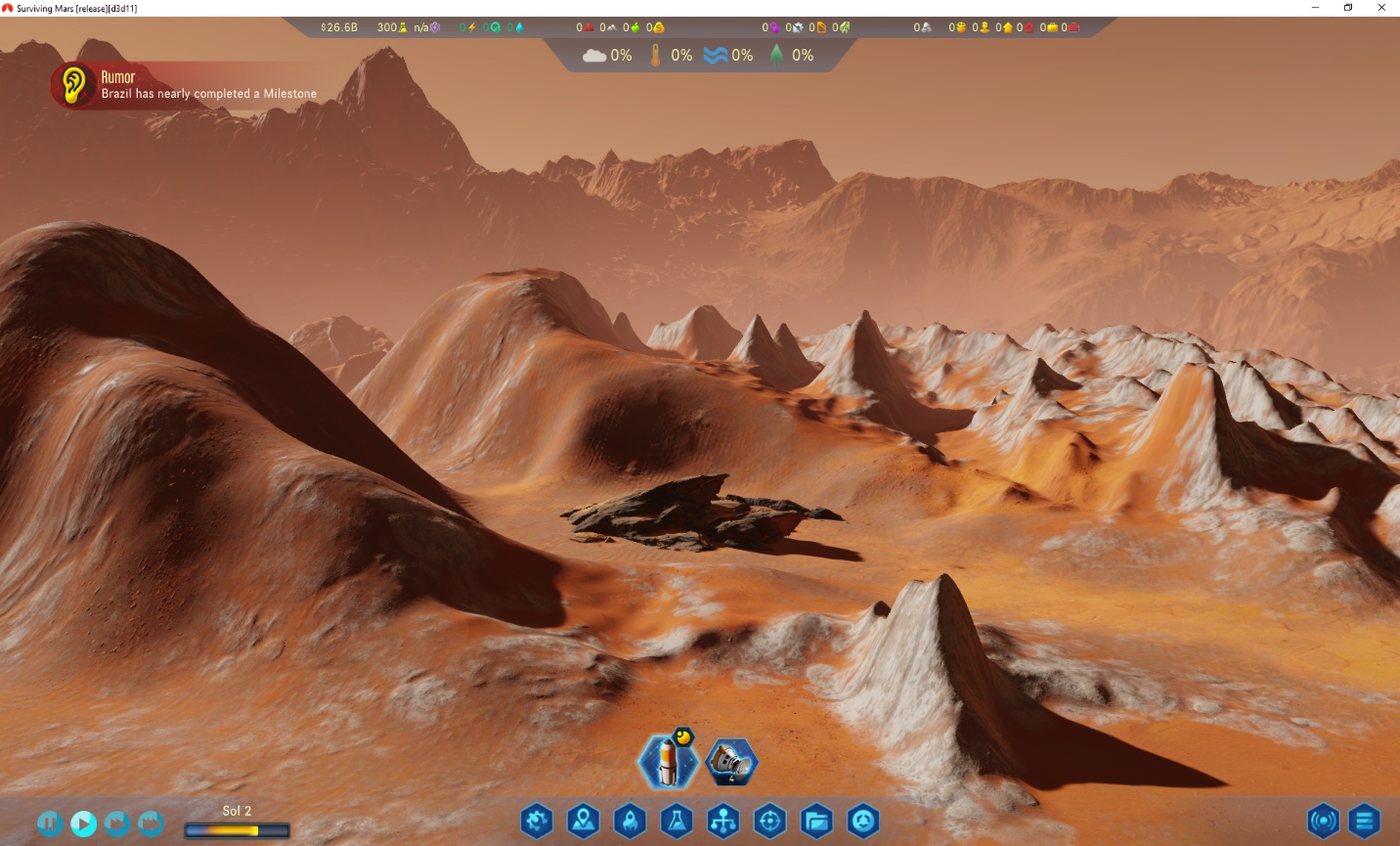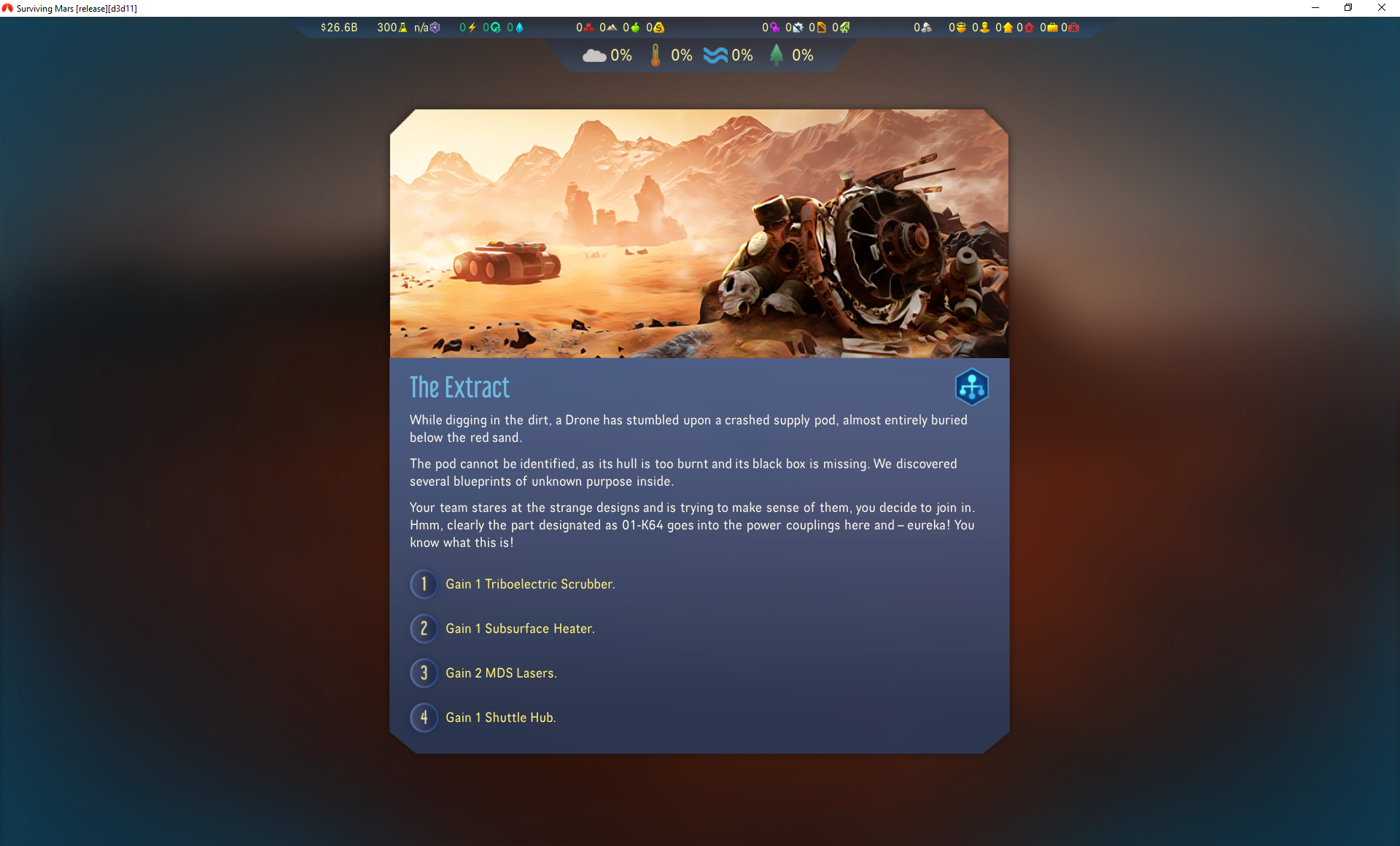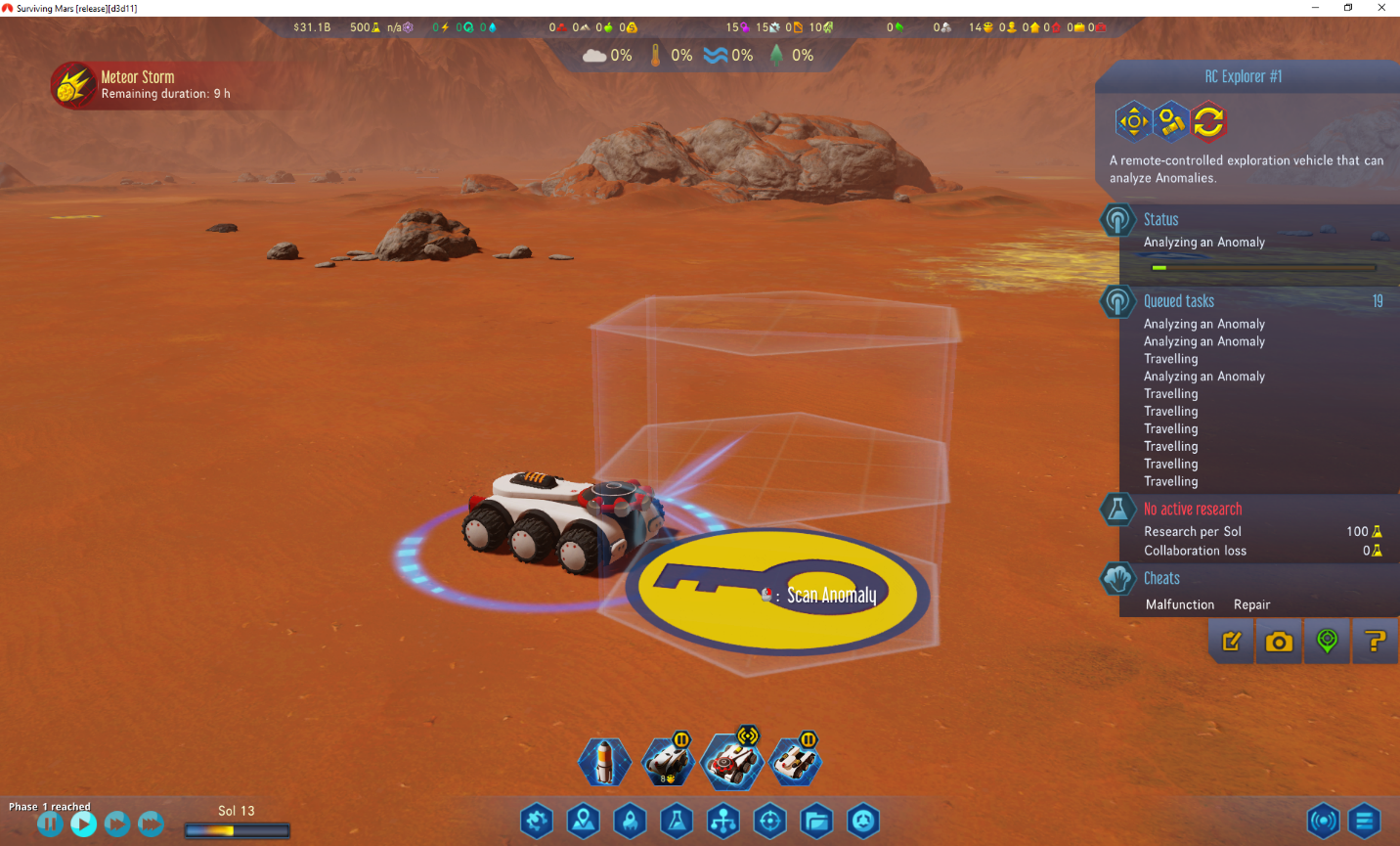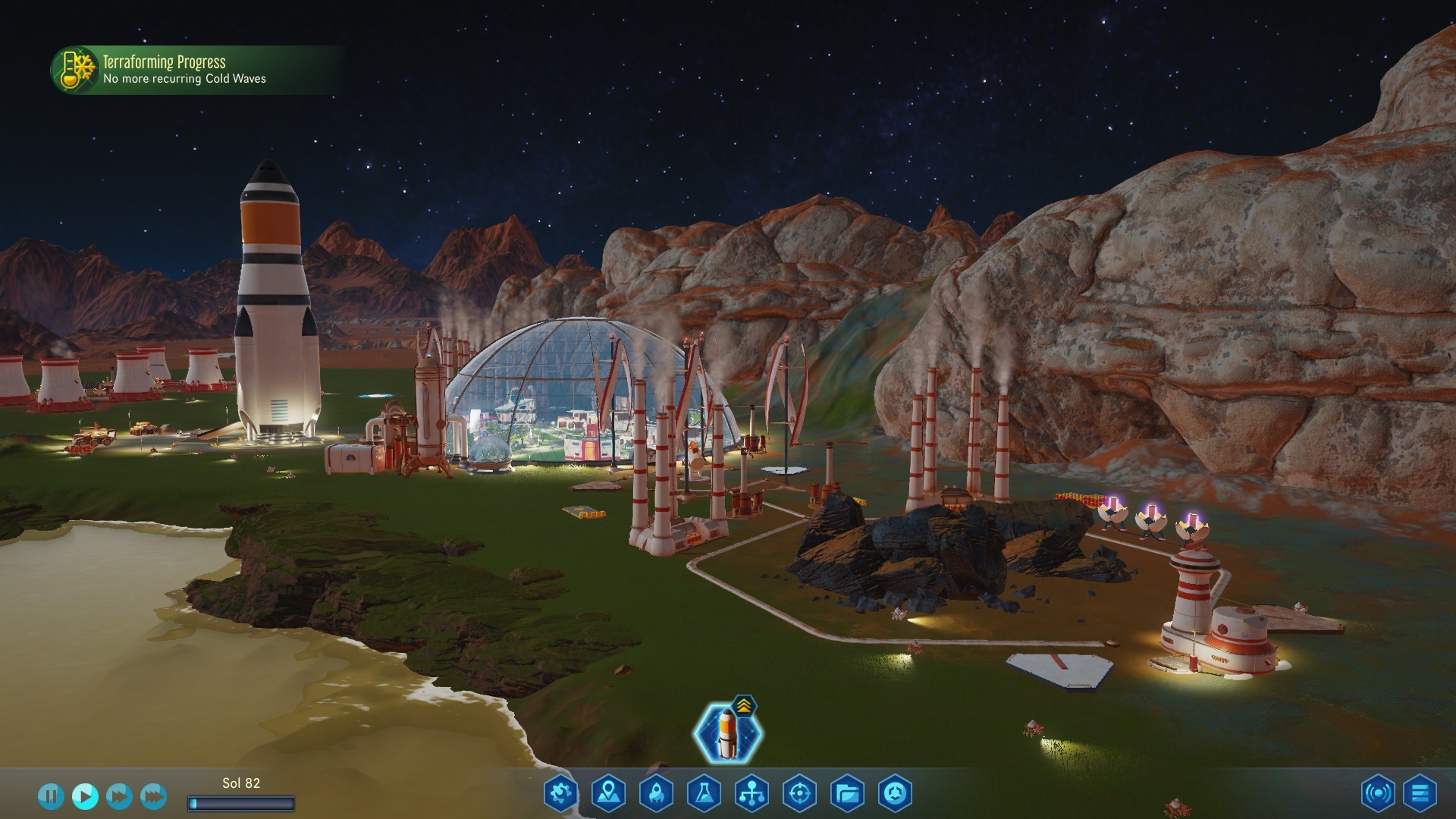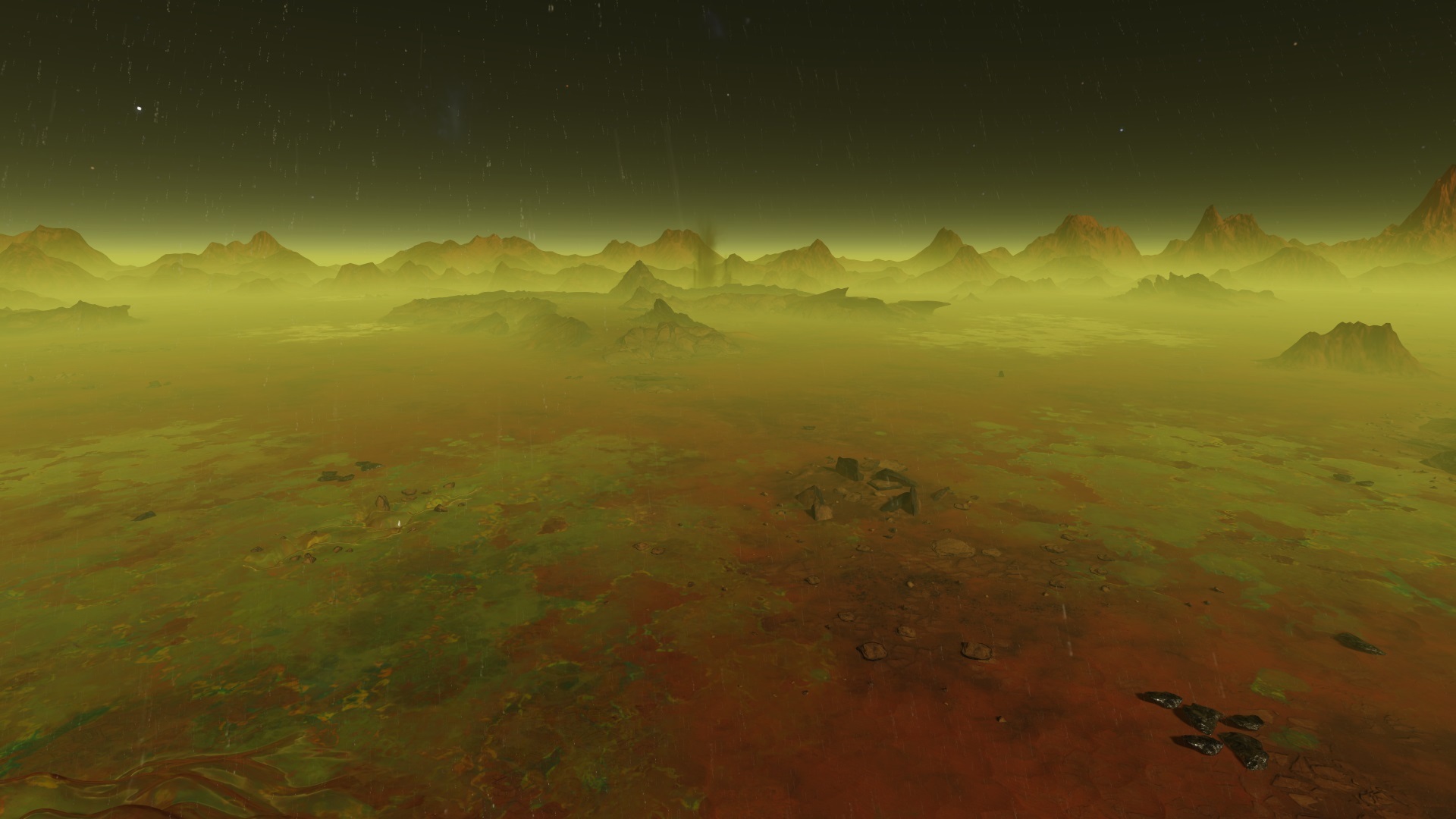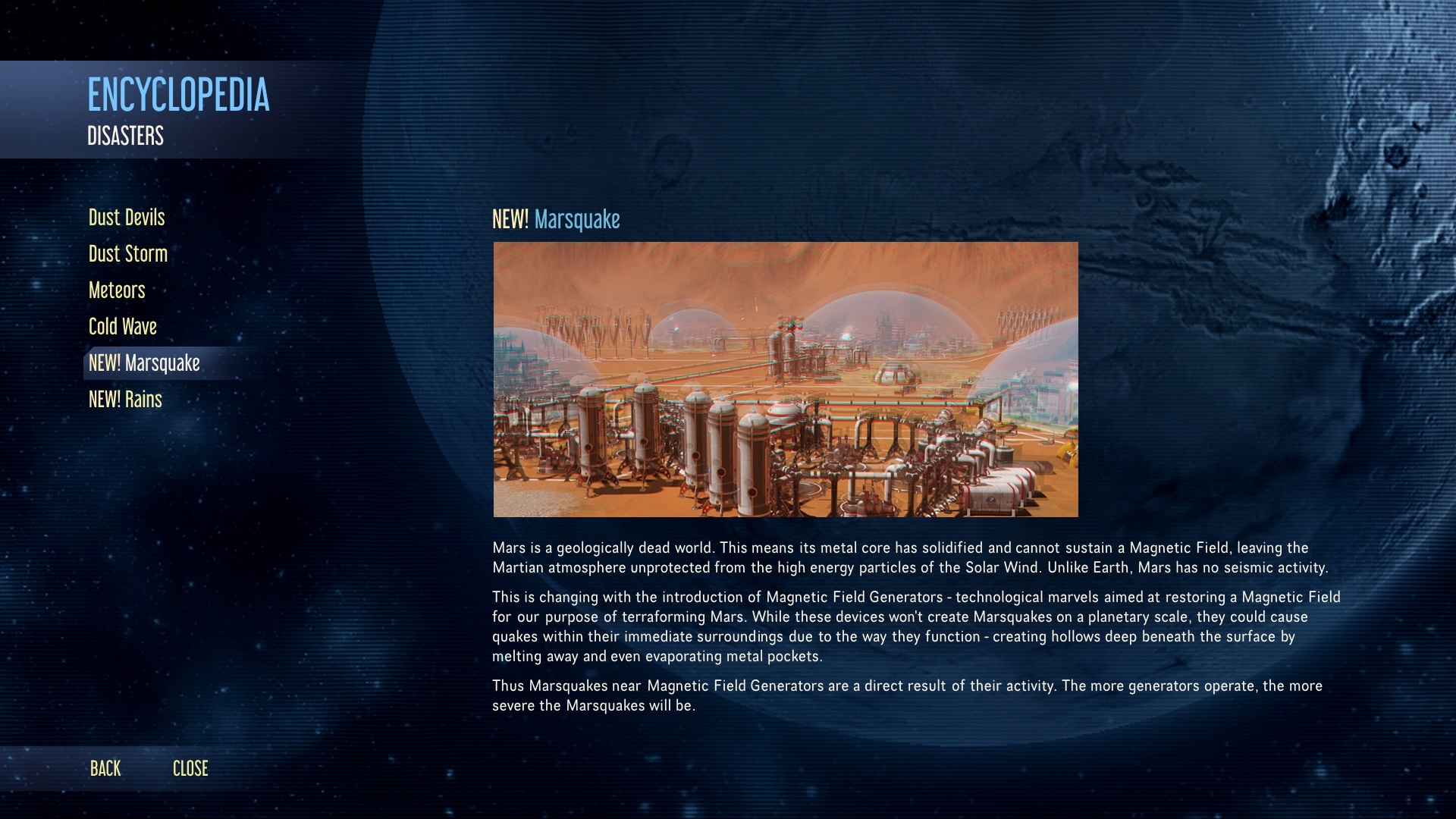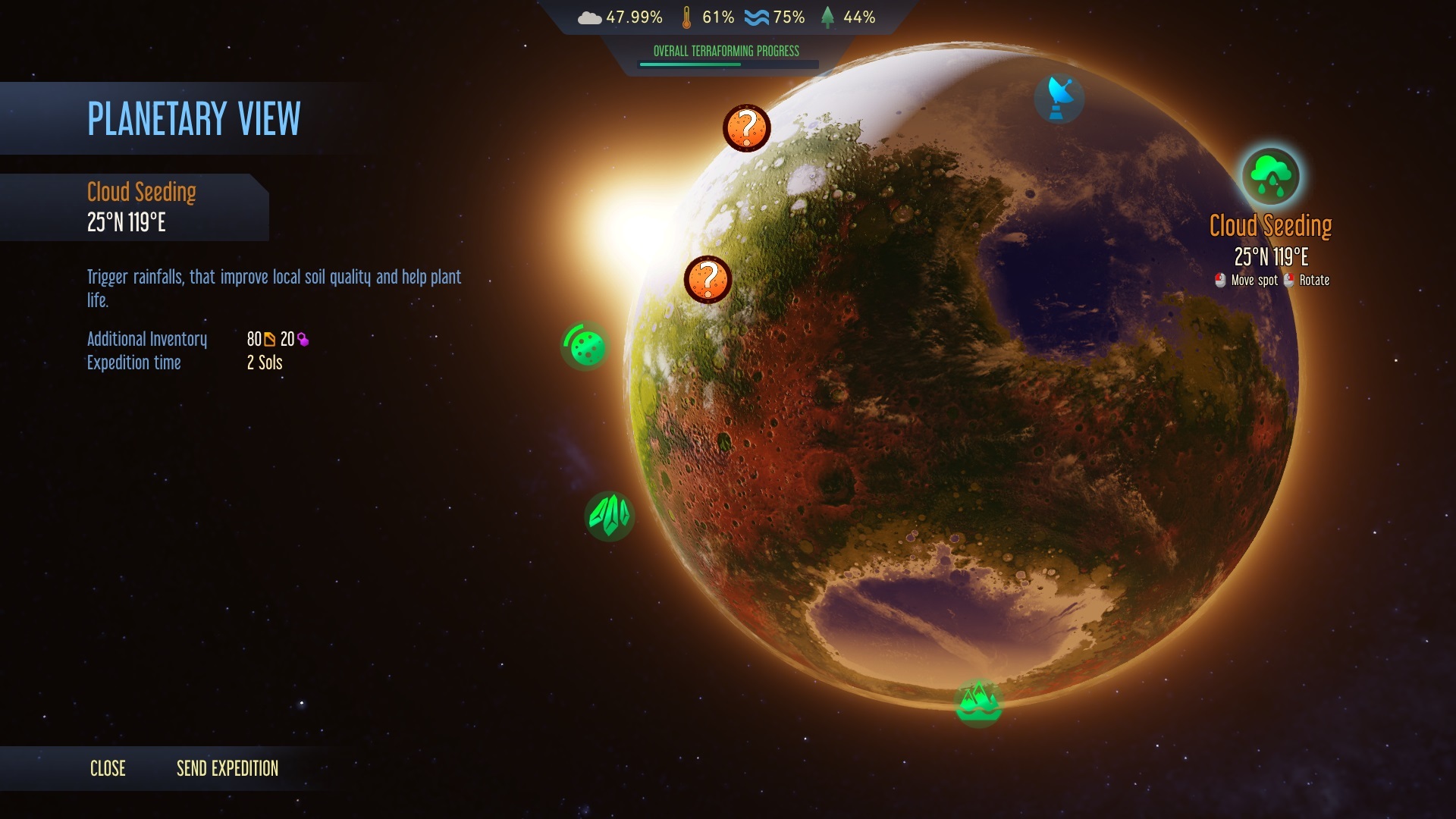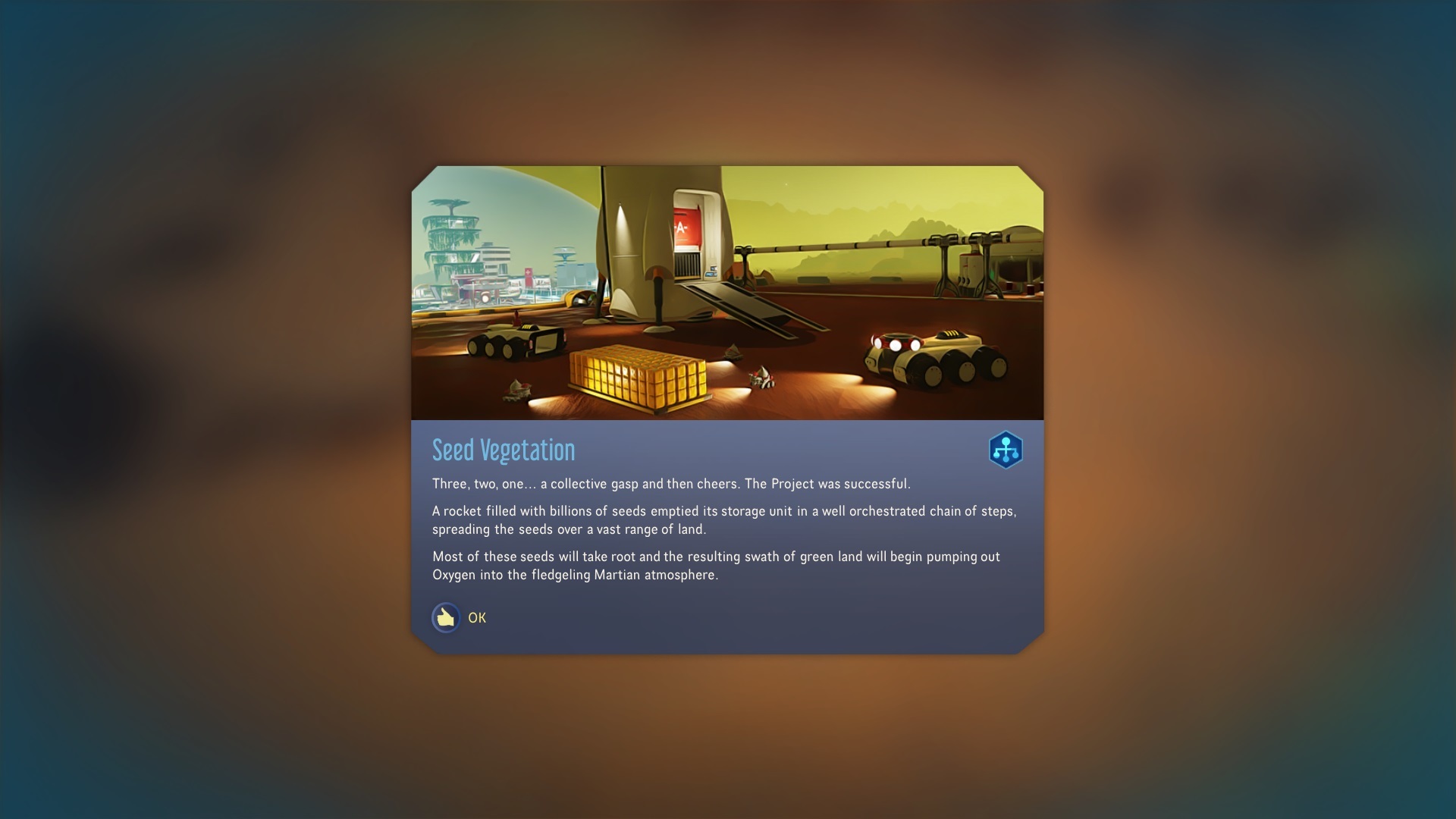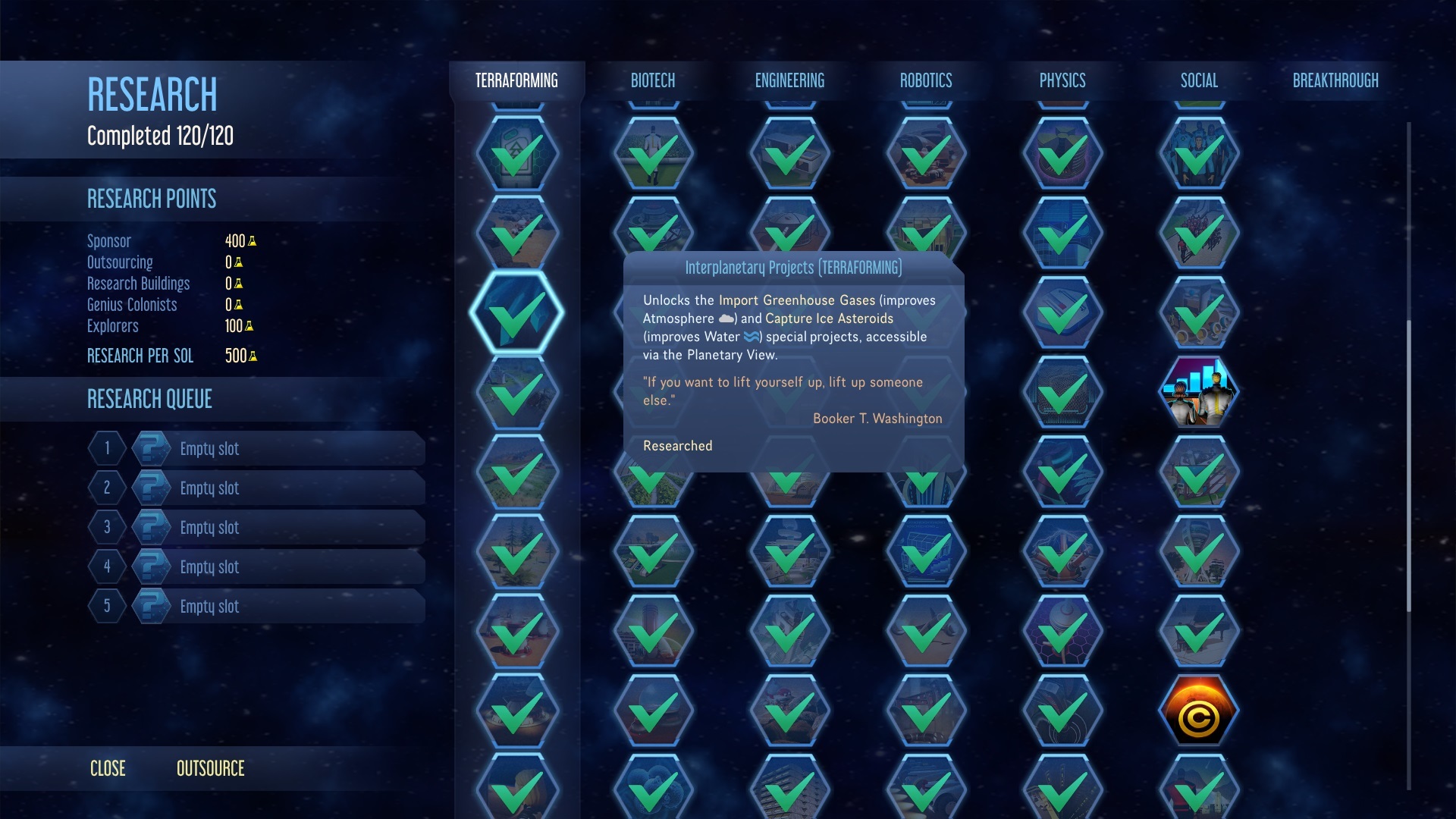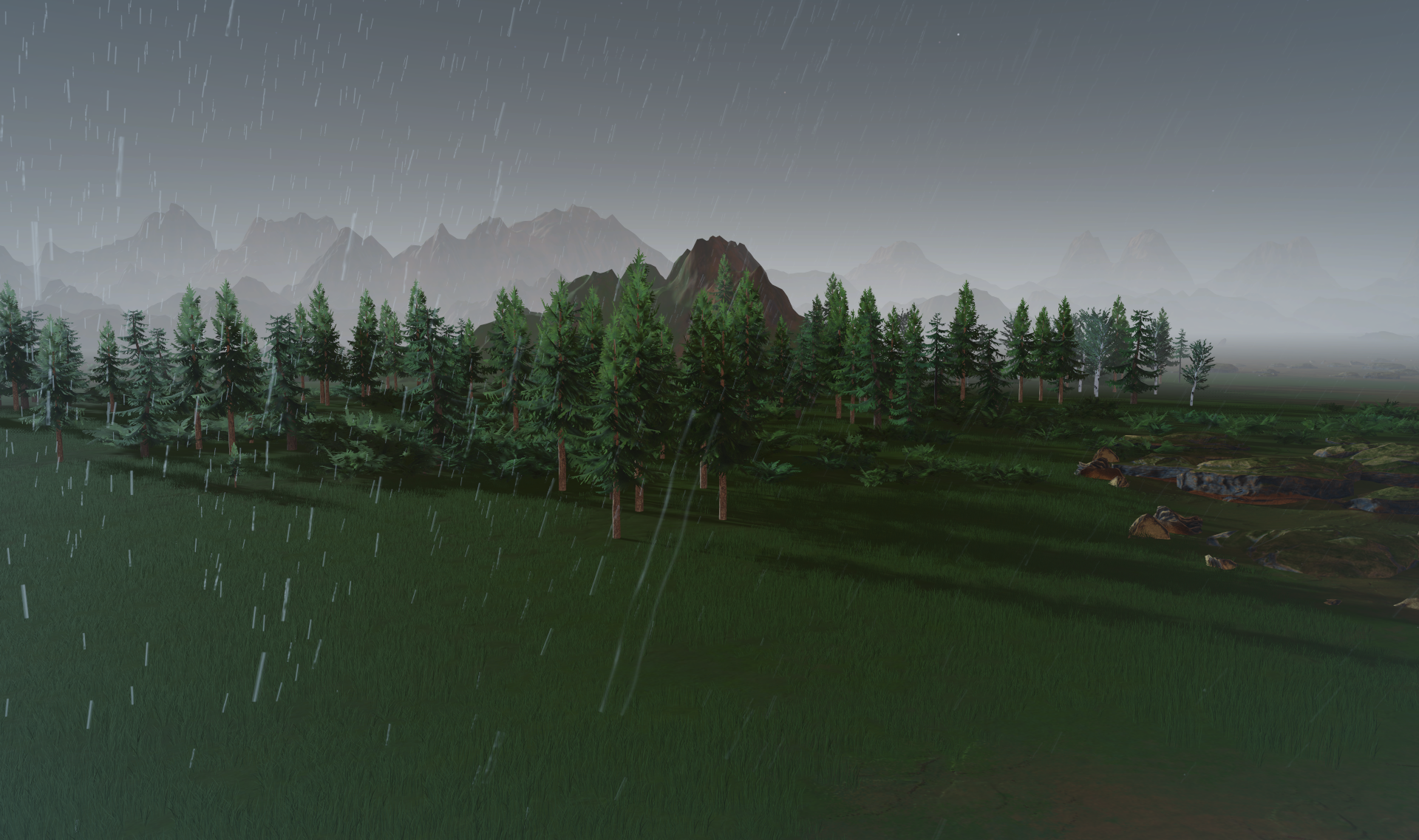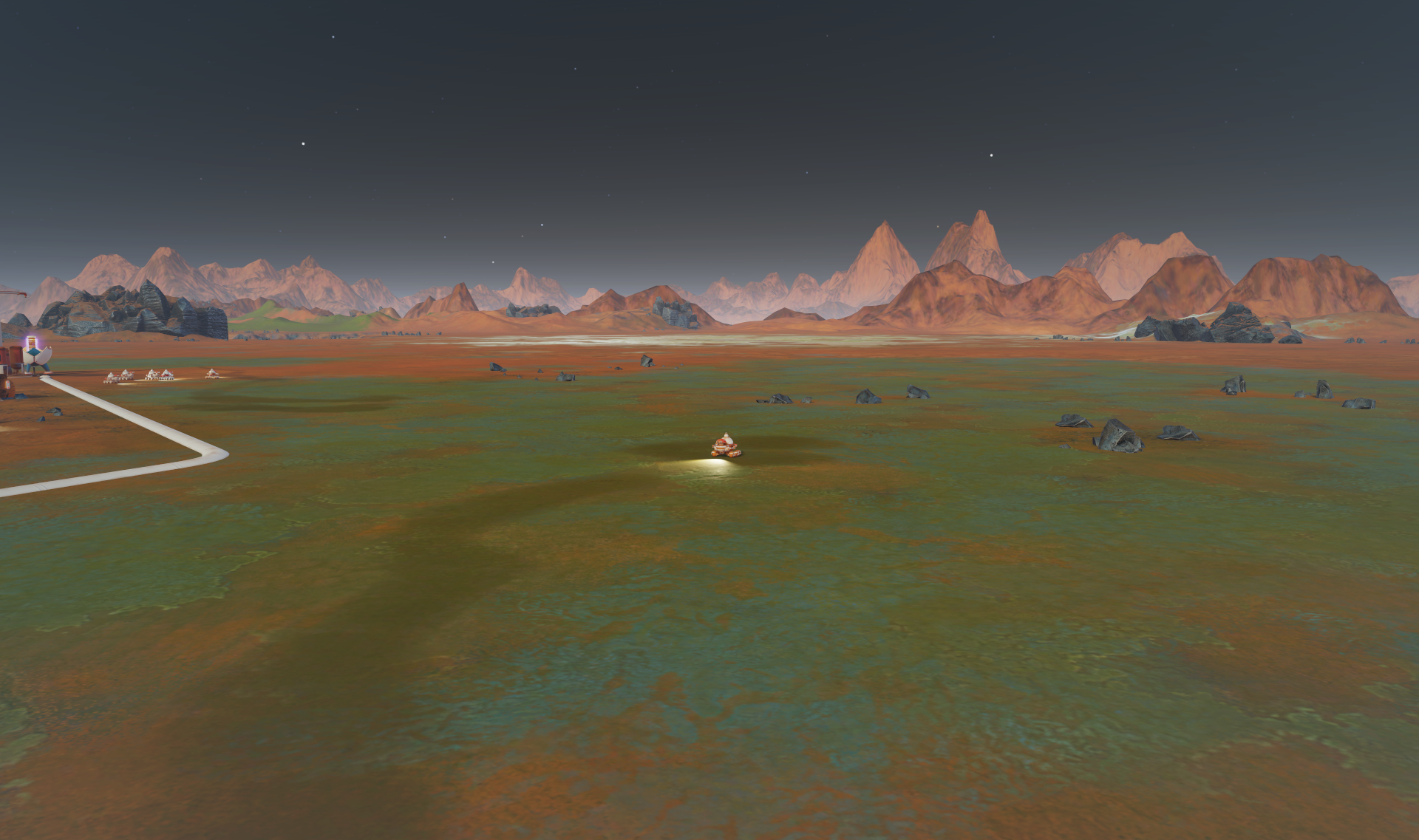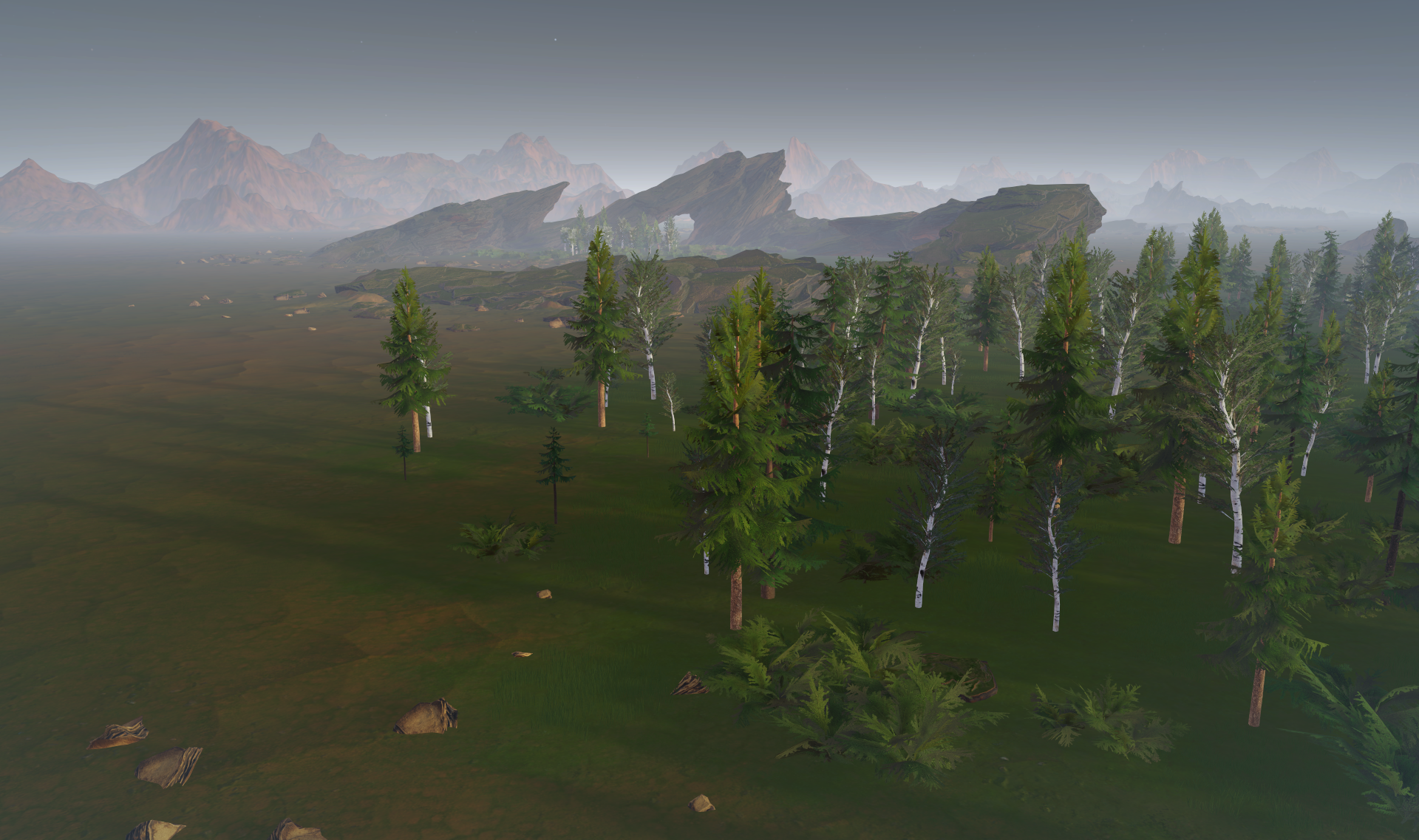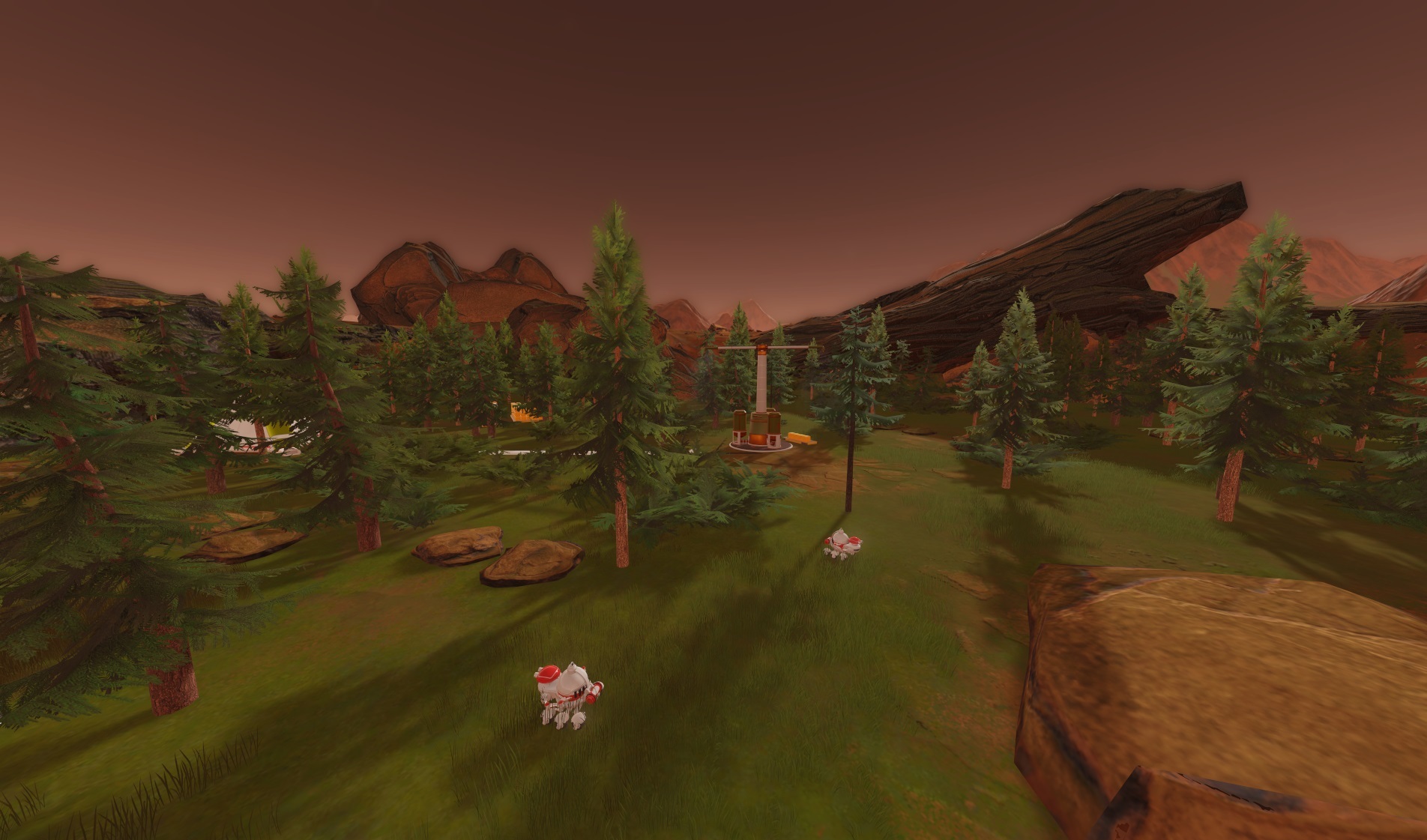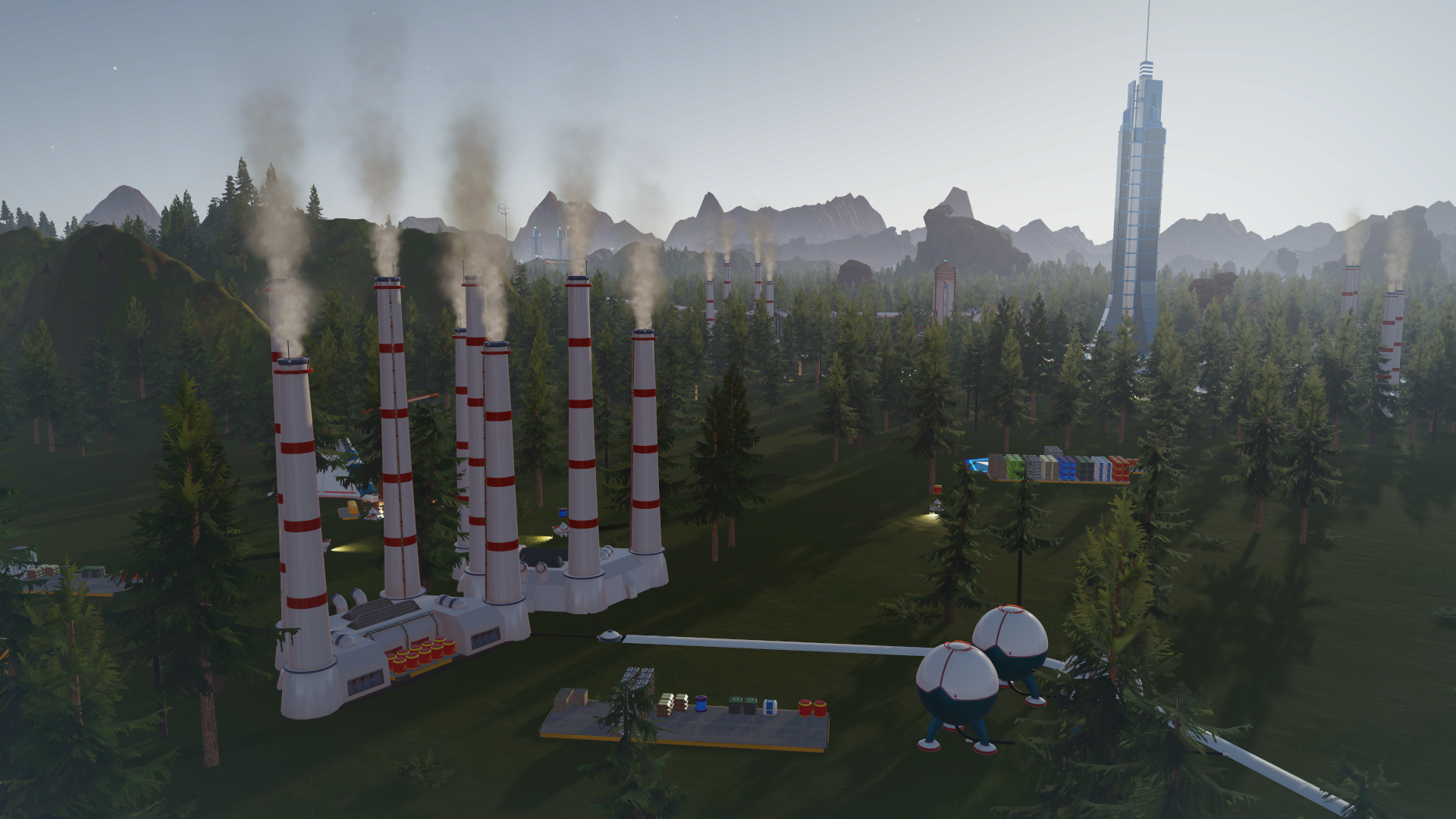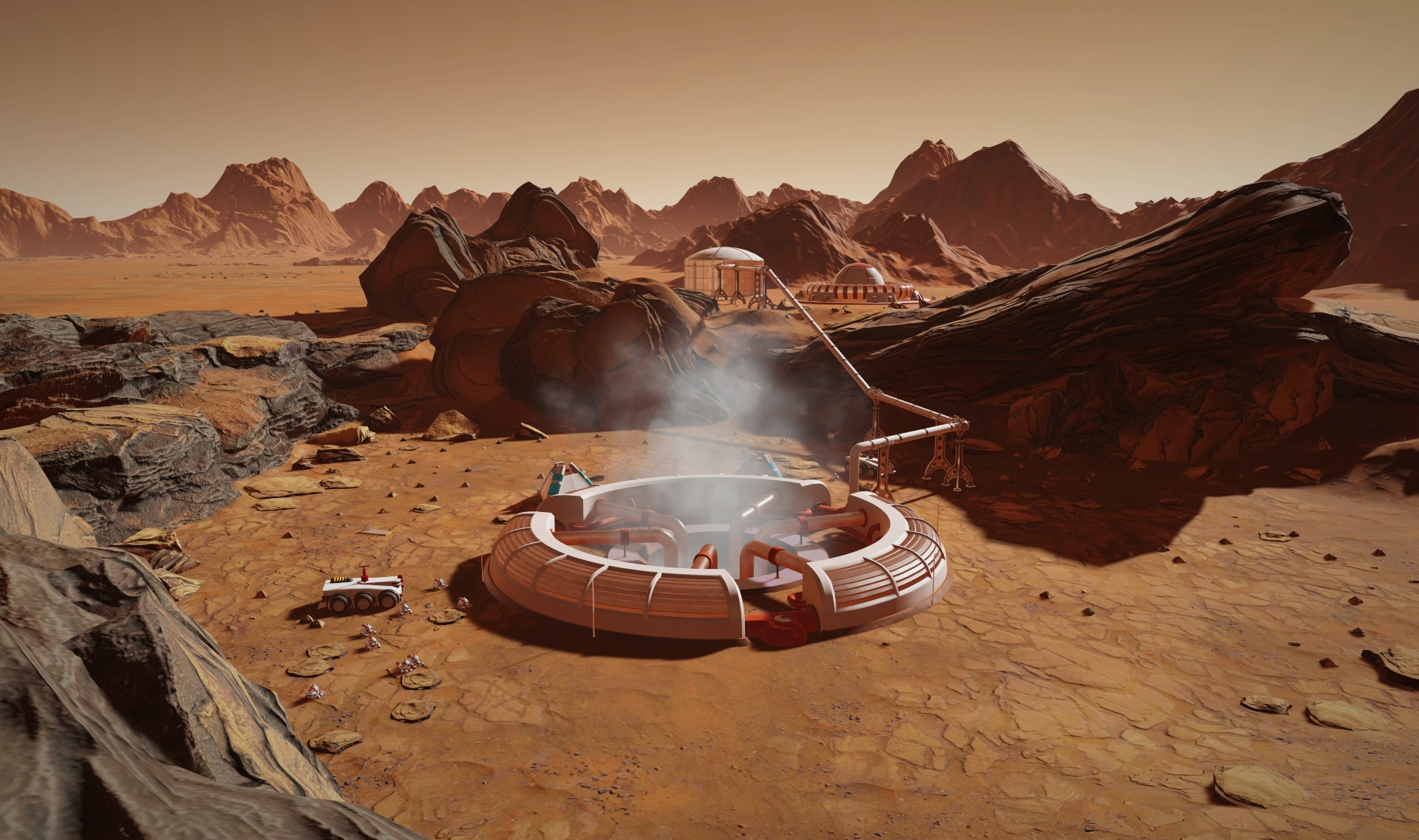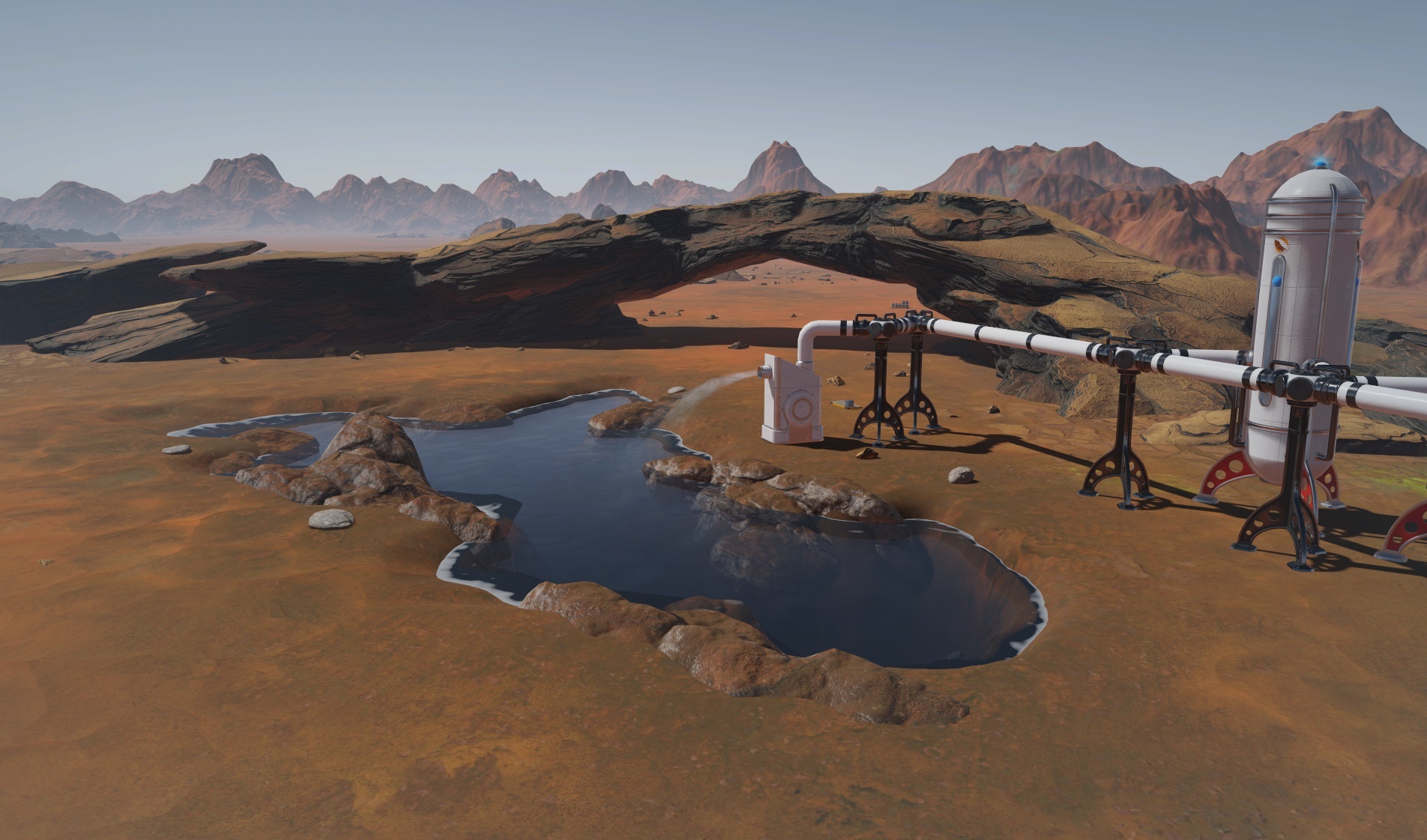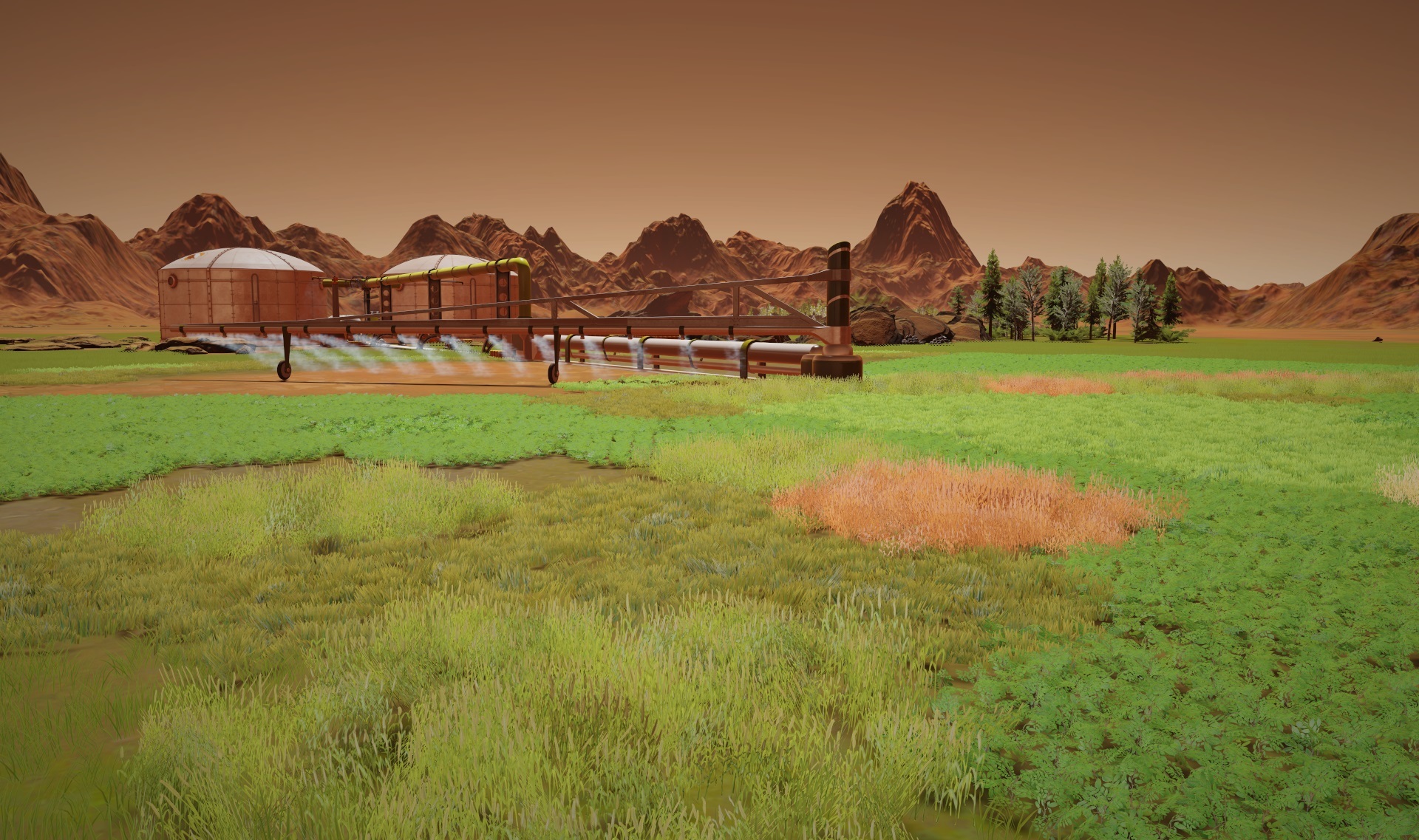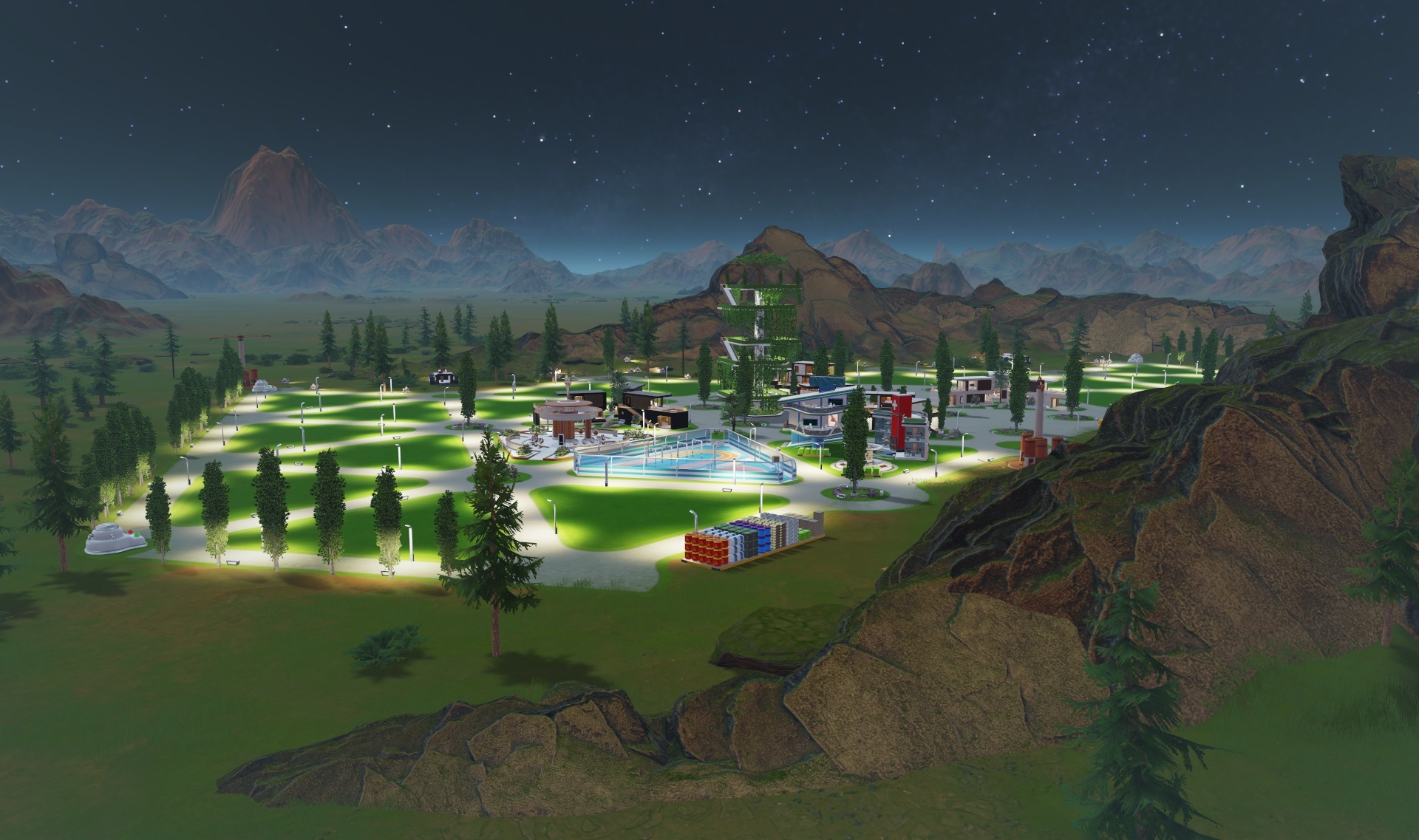
May 29, 2019
Surviving Mars - Azure
Surviving Mars: "Cernan" Update Patch Notes
Thank you all for giving us a tremendous release for Green Planet - which has thrust Surviving Mars into the spotlight all across the internet and on Steam. We've had so many players come back to the game for this expansion!
We know there were some bugs, as is usual for any release, and we're happy to have squashed a bunch of them. If you're still having trouble playing the game, please go to our support forum or just click CTRL + F1 to send us a report from directly within the game!
Green Planet:
- Fixed several game freezes (reported by the community, related to RC transports in savegames, and Dozers)
- Fixed terraforming info showing in infopanels in savegames started without Green Planet
- Fixed Transport Optimization tech applying to RC Dozer
- Fixed Lakes to check local (actual) temperature to determine frozen state (not global temperature)
- Fixed terraforming buildings' Amplify upgrades to take into account Overcharge Amplifications breakthrough
- Fixed RC Transport interacting with Open Farm crops
- Fixed endless (toxic or water) rains
- Fixed Outdoor Farms harvest not being collected by Drones
- Added harvest information in tooltip of Open Farm
- Added check for breakthrough availability when terraforming is disabled
Space Race:
- Fixed flying Drones coming back to life after destruction
- Fixed flying Drones affected by explosions when too high
- Fixed Advanced Stirling Generator heat output in a cold area/during cold wave
Project Laika:
- Added Encyclopedia entries for Ranch and Outside Ranch
Main Game:
- Fixed crash when constructing buildings at the map border
- Fixed several game freezes related to wisps (St Elmo's Fire Mystery)
- Fixed game freeze occurring when a Drone is destroyed while embarked on a Rover
- Fixed old savegames not applying current logic when accepting trade offers/converting Landing Pads
- Fixed savegames displaying Seeds as farm crops in games without Green Planet
- Fixed Drones unloading resources from Expedition Rocket when resources are loaded by RC Transport
- Fixed events effects continuing when the event is completed (broken Drones in "Drone Prototypes")
- Fixed display of tooltip in "Clear" button in Infopanel
- Fixed display of dome radius
- Fixed camera issue while zooming out during an ongoing marsquake
- Fixed Drone behaviour when changing priority during construction (building is no longer cancelled)
- Fixed resource allocation when destroying buildings
- Fixed scripting logic choosing invalid events from planetary anomalies
- Fixed colonists living in the nursery (it's time to grow up!)
- Fixed Rocket cargo display when returning from expedition
- Fixed Landing Pads becoming unusable after rocket construction
- Fixed Trade Rockets accepting wrong amount of resources in automated mode
- Fixed Large Dumping Site infopanel slider behaviour for desired amount of waste rock (controller-only)
- Fixed UI scale not allowing passenger selection when set to maximum
- Added hover and click sounds to main menu news feed
- Added separate spots and fixed orientation of drones when constructing Rockets
- Latitude and longitude coordinates are no longer translated to allow coordinates sharing in non-English versions of the game
Modding:
- Added modding functionality for FX elements (sound, decal, light, colorization, particles)
- Added modding functionality for Animals & Vegetation
- Added Tech Field ModItem
- Added message to indicate if a detected scripting error is related to a mod
- Tables for Rival Colonies converted to global for easier modding
- Updated modding documentation
PS4 version specific:
- Fixed linking PDX account when exiting PSN and restarting console
Art asset fixes for the following additional content:
- Green Planet
- Space Race
- Project Laika
- Digital Deluxe Edition
- Colony Design Set




